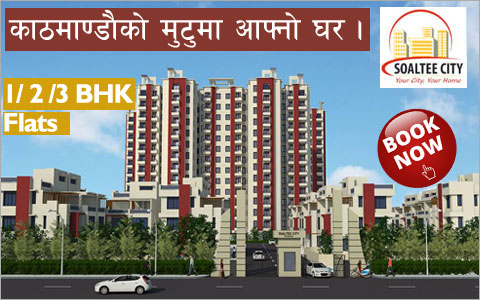National News

In February, the Nepal Bankers’ Association, an umbrella body of commercial banks, directed all commercial banks not to offer interest of over 11 per cent to depositors who park money in fixed deposit accounts. The association was not the authorised body to make the intervention, but the banking sector regulator kept mum.
Emboldened, the association, in March, barred all commercial banks from offering interest of over eight per cent on savings deposit. The banking sector regulator again turned a blind eye to this move.
Nepal Rastra Bank, the banking sector regulator and the central bank, remained a mute spectator to these practices of controlling competition in the banking sector, because deposit rates were going through the roof at that time, NRB officials said on condition of anonymity. Had this measure not been taken deposit rates could have shot up to 18-20 per cent, making loans very expensive, they said.
Until two years ago, banks were offering interest of around three per cent on savings deposit and less than 10 per cent on fixed deposits. Deposit rates have since surged because of deceleration in remittance inflow and the government’s slow capital spending.
Very high deposit rates are not good for the economy because they make credit expensive. An expensive credit hurts the sentiment of borrowers, especially those who are looking forward to expanding, diversifying or setting up businesses with a bank loan. So, deposit rates should remain high enough to inspire people to save, but not so high that it knocks the confidence of borrowers. The central bank officials, thus, believed the association’s intervention would eventually contain rising lending rates as well.
Was this goal achieved? No, because banks failed to put brakes on runaway lending rates. In other words, banks reduced their expenses by putting a cap on deposit rates, but they did not reduce lending rates, which helped them to continue maximising income, while borrowers felt the brunt.
Today, commercial banks are charging interest of up to 24.7 per cent on loans, shows information on their websites. Even interest on term loan, which is mostly used by small and medium enterprises, stands as high as 17.6 per cent. What’s more, even well-established banks, which can disburse term loans at lower rates, are compelling borrowers to pay minimum premium of 4.5 per cent on the base rate, increasing credit’s cost.
These rates are being offered at a time when inflation has moderated to 5.3 per cent, as against 10 per cent two years ago.
“High credit rates reduce risk appetite of investors because they fear they’ll end up spending most of the income to service the debt and this squeezes profit,” said Roop Jyoti, vice chairman of Jyoti Group, a leading industrial and trading house. “If this continues, investment will not go towards productive sector as intended by the central bank. This will hit job creation and make it hard for the economy to book higher growth rates.”
His statement comes at a time when Finance Minister Yubaraj Khatiwada has said the next fiscal’s budget would focus on creating equal opportunities to enable every Nepali to engage in entrepreneurial activities.
In a country where other financing tools, such as venture capital and private equity, are just emerging, bank credit is the only option to start or expand a business. But banks are more focused on increasing their own profit, as they are borrowing money from depositors at a lower cost and disbursing loans at way higher prices.
In the third quarter of this fiscal year, for example, 28 commercial banks operating in Nepal posted a net profit of Rs 36.3 billion, up 15.5 per cent compared to the same period a year ago, show unaudited financial statements of financial institutions.
Banks are generating profit year after year because of the NRB policy on five per cent interest spread. The Federation of Nepalese Chambers of Commerce and Industry, the largest private sector umbrella body, had earlier called for reduction in interest spread. But the regulator has not done anything.
“All the while, productive sector is struggling to repay debt because of high cost of borrowing,” said Shyam Prasad Giri, president of the Federation of Nepal Cottage and Small Industries.
This calls for intervention to correct the market failure, said FNCCI President Bhawani Rana.
Nepal has adopted the policy of market economy and promotes free competition. But such competition must serve society and ensure efficiency. “If there are inefficiencies, rules should be set and interventions made to stabilise the situation,” said Rana. “So, the central bank, not the grouping of commercial banks as in the past, should take the lead to bring the situation under control.”
source: Rupak D Sharma, The himalayan times, 18 May 2018
- 9th Nepal Buildcon International Expo 2024
- Real Estate Expo 2023
- NRB raises housing loan limit to encourage home constructions
- Nepal Rastra Bank (NRB) Monetary Policy 2080-2081
- New Price of Land in Kathmandu Metropolitan City, Nepal
- Capital Gains Tax Rate on Real Estate Transactions in Nepal 2080-81 ( 2023/24 )
- Kathmandu metropolis implements free parking policy for commercial buildings and hospitals

![[X]](https://www.housingnepal.com/images/popup-close-button.png)























































































































































































































































































































































































 Facebook
Facebook
 Delicious
Delicious
 Digg
Digg
 Reddit
Reddit
 Stumble Upon
Stumble Upon









